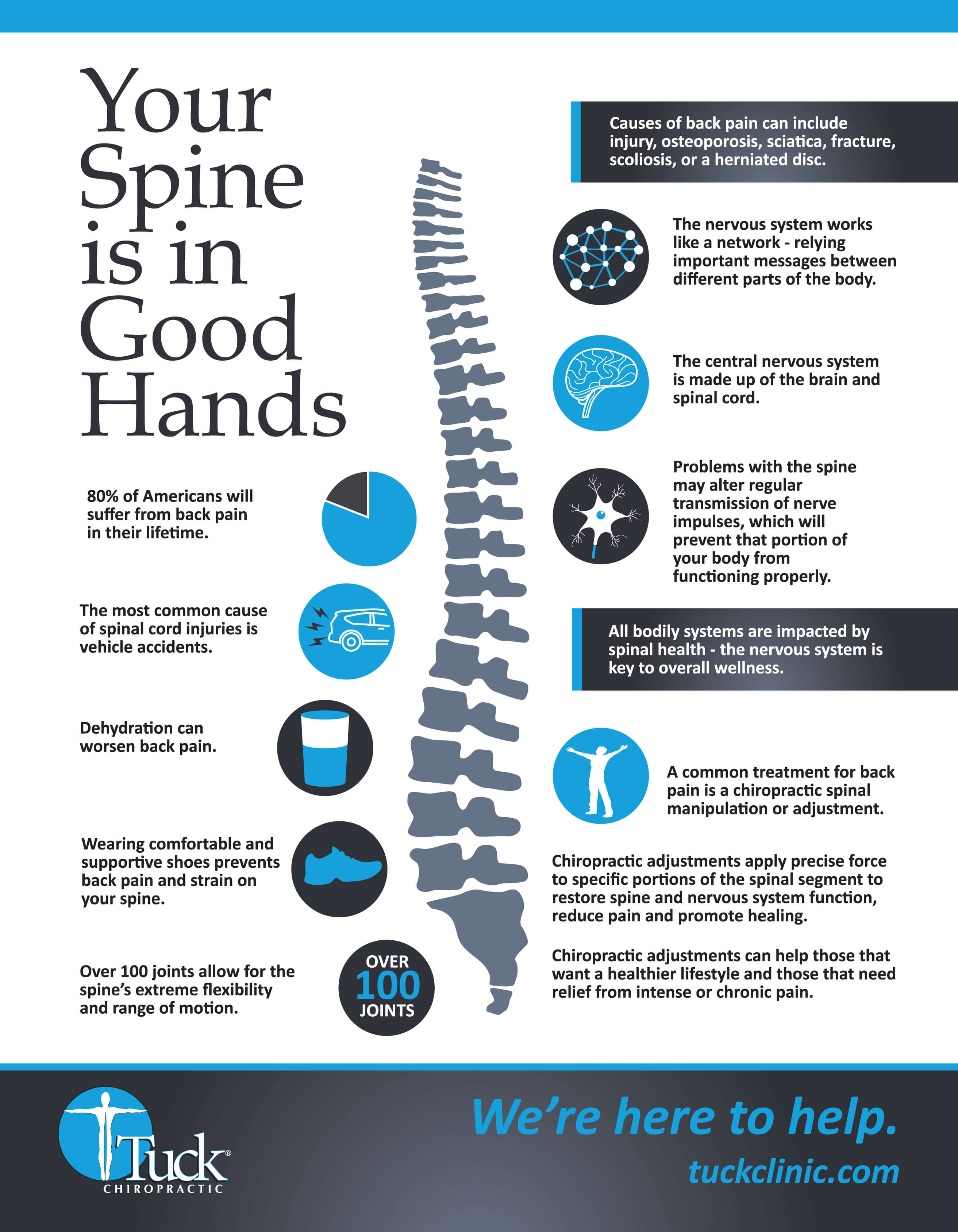The Link In Between Posture And Neck And Back Pain: Ways To Make Certain Correct Placement All Day
The Link In Between Posture And Neck And Back Pain: Ways To Make Certain Correct Placement All Day
Blog Article
Content Produce By-Conway Mcgowan
Preserving appropriate stance isn't almost sitting up directly; it has to do with aligning your body in such a way that supports your spine and lowers the risk of neck and back pain. The way you rest, stand, and relocate throughout the day can substantially impact your spine health. Yet how exactly can you guarantee great alignment consistently, even during active days loaded with different tasks? Let's dig deeper into the refined yet impactful adjustments you can make to your everyday regimen to keep your back satisfied and healthy.
Significance of Correct Stance
Correct position is critical in preserving a healthy back and protecting against discomfort. When you rest or stand with good posture, your spine remains in placement, lowering pressure on your muscle mass, ligaments, and joints. chiropractor medicaid allows the body to distribute weight equally, stopping excessive tension on specific areas that can bring about pain and pain. By keeping your back appropriately straightened, you can also enhance your breathing and digestion, as slouching can press organs and restrict their capability.
Furthermore, maintaining good posture can boost your overall appearance and confidence. When you stand tall with your shoulders back and head held high, you emanate confidence and show up even more approachable. Great posture can additionally make you feel extra stimulated and alert, as it advertises proper blood circulation and permits your muscle mass to work effectively.
Incorporating appropriate pose right into your everyday routine, whether sitting at a desk, strolling, or working out, is essential for protecting against neck and back pain and advertising overall wellness. Bear in mind, a tiny change in just how you hold on your own can make a substantial distinction in just how you feel and function throughout the day.
Common Postural Mistakes
When it pertains to preserving great posture, several individuals unwittingly make common errors that can contribute to pain in the back and discomfort. Among https://chiropractornearmecaracci38271.blogs100.com/30727735/integrate-the-unusual-connection-in-between-chiropractic-care-and-psychological-health-and-wellness-revealing-just-how-spine-changes-might-hold-the-trick-to-a-balanced-mind-body-stability of the most widespread mistakes is slouching or stooping over while sitting or standing. This setting puts too much pressure on the spinal column and can lead to muscle inequalities and discomfort in the long run.
Another common blunder is overarching the reduced back, which can flatten the all-natural curve of the spinal column and cause pain. In addition, crossing legs while sitting may really feel comfy, yet it can produce an imbalance in the hips and pelvis, resulting in postural issues.
Utilizing a pillow that's also soft or as well solid while sleeping can also influence your placement and add to neck and back pain. Last but not least, regularly craning your neck to look at screens or readjusting your position regularly can stress the neck and shoulders. Being mindful of these usual postural errors can aid you keep far better placement and lower the risk of back pain.
Tips for Correcting Positioning
To enhance your placement and decrease pain in the back, it's necessary to focus on making small adjustments throughout your day-to-day routine. Begin by being mindful of your stance. When sitting, ensure your feet are flat on the floor, your back is straight, and your shoulders are kicked back. Prevent slouching or leaning to one side. Usage ergonomic chairs or cushions to support your lower back.
When standing, disperse your weight equally on both feet, keep your knees somewhat curved, and embed your hips. Engage your core muscles to support your back. Take breaks to stretch and walk if you have a less active job. Integrate exercises that reinforce your core and back muscular tissues, such as slabs or bridges.
While resting, utilize a cushion that supports the all-natural curve of your neck to preserve appropriate back positioning. Avoid sleeping on your tummy, as it can strain your neck and back. By bearing in mind these suggestions and making small modifications, you can slowly fix your positioning and alleviate back pain.
Conclusion
Remember, maintaining great posture is key to preventing back pain and promoting spine wellness. By bearing in mind your alignment, dispersing weight equally, and involving your core muscular tissues, you can decrease stress on your back and minimize the risk of pain and injury. Incorporate ergonomic support, take regular breaks to stretch, and strengthen your core and back muscular tissues to keep proper alignment throughout the day. Your back will certainly thanks for it!
